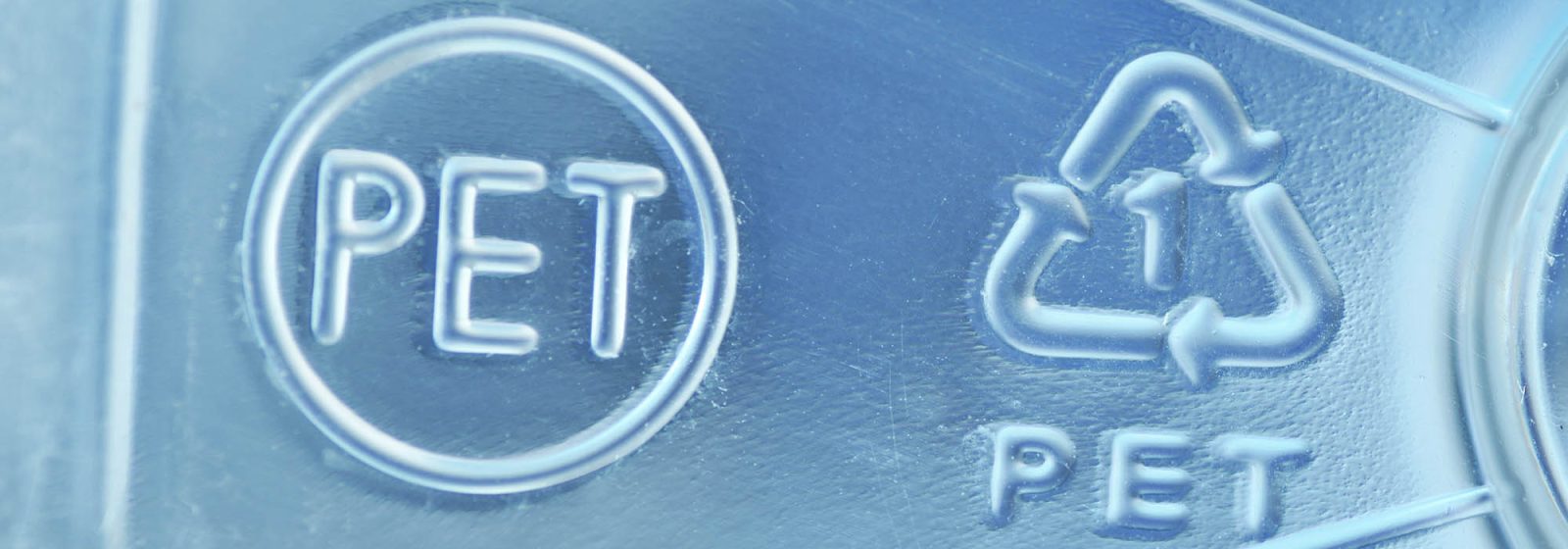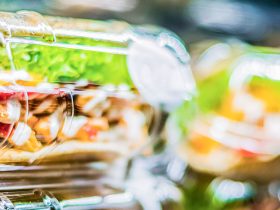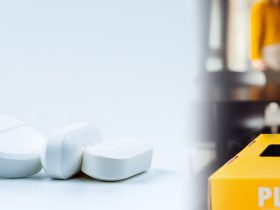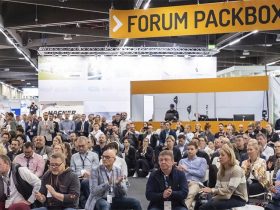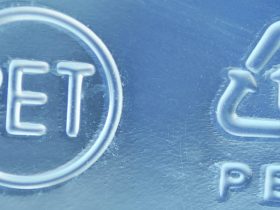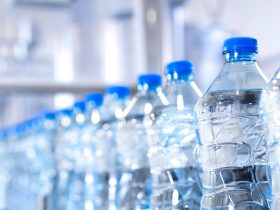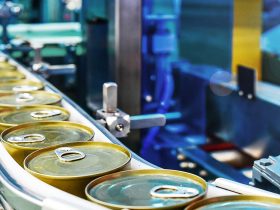Based in Brussels, he serves as Technical Director of the non-profit organization PETCORE EUROPE, while also holds the position of General Secretary of the European PET Bottle Platform (EPBP) and the Trays Circularity Evaluation Platform (TCEP).
Read what he told Global Pack Insights about PET, which is “one of the most widely used packaging materials in the Globe due to its unique combination of functionality, safety, and sustainability”.
*Follow PETCORE EUROPE on Social Media: Twitter/X, Facebook, LinkedIn.
Interview: Kyriaki Moustakidou

Could you briefly describe the role and scope of action of PETCORE EUROPE?
PETCORE EUROPE is a Brussels-based non-profit association that represents the entire PET (Polyethylene Terephthalate) value chain since 1993. With more than 160 corporate members and nine industry associations, PETCORE brings together PET producers, recyclers, converters, brand owners, technology providers, label and masterbatch manufacturers, waste management companies, and retailers.
The organization’s vision is to establish PET as the circular material of choice for packaging, ensuring that PET is widely collected, recycled, and recognized for its superior performance in a sustainable economy. Its mission is to position PET as the preferred packaging material within the European circular economy, where resources are continuously reused and environmental impacts minimized.
To achieve this, PETCORE pursues several key goals:
- Foster strong alignment across the PET industry, encouraging collaboration and joint initiatives that support sustainable growth throughout the value chain.
- Promote PET as an environmentally responsible packaging material and a vital contributor to the EU Circular Economy.
- Promote and lead projects, working groups, and communication platforms that demonstrate PET’s sustainability credentials.
PETCORE actively supports innovation by validating new packaging solutions that deliver measurable life-cycle benefits, including enhanced recyclability and improved resource efficiency. It works with stakeholders at every level to expand the collection, recycling, and reuse of post-consumer PET, ensuring the material remains a cornerstone of sustainable packaging.
The association also provides expert validation of PET recycling capabilities for both food and non-food applications, ensuring compliance with EU safety and sustainability standards. In addition, PETCORE responds swiftly and effectively to public or institutional consultations and enquiries regarding virgin PET (vPET) and recycled PET (rPET), drawing on the expertise of its diverse membership base.
Finally, PETCORE is committed to advocacy. It represents the PET industry before European institutions and leading organizations, ensuring that the benefits of the PET value chain are accurately reflected in legislation, policy frameworks, and position statements.
PETCORE EUROPE serves as a liaison organization to CEN and, since 2023, has proudly held accreditation as an observer to the United Nations Environment Programme (UNEP) and its subsidiary bodies. The association actively contributes as a member of the Ecodesign Forum and the Informal Expert Group on Waste. Beyond these institutional engagements, PETCORE EUROPE drives progress in the polyester textile sector by fostering the creation of an industry and institutional platform dedicated to advancing recycling and circularity. At the same time, it champions the introduction of new Taric codes to ensure the proper recognition of rPET pellets and flakes, thereby strengthening transparency and supporting the transition towards a more circular plastics economy.
By uniting stakeholders, fostering innovation, and championing sustainability, PETCORE EUROPE plays a pivotal role in driving the transition toward a truly circular economy, where PET continues to set the standard for responsible and efficient packaging solutions.
What are the benefits of PET plastic? In what ways has PET, as a material used in packaging, contributed to the evolution of the plastics sector in Europe overall?
PET (Polyethylene Terephthalate) has become one of the most widely used packaging materials in the Globe due to its unique combination of functionality, safety, and sustainability. Lightweight, durable, and transparent, PET offers excellent barrier properties that protect food and beverages while reducing material use and transport emissions. It is also shatterproof, making it a safe and versatile alternative to glass or other rigid packaging.
From an environmental perspective, PET is the most circular polymer and can be reprocessed into new bottles, trays, textiles, and other applications even at a recycled content 100%. The establishment of efficient collection and recycling systems across Europe has allowed PET to become a cornerstone of the circular economy. The plastics sector has been reshaped around the principle of designing packaging that is not only functional but also circular and compliant with EU sustainability goals.
Over the past decades, PET has significantly advanced lightweighting technologies, reducing the material footprint of bottles and containers while maintaining performance. It has also spurred innovation in areas such as recycled PET (rPET) integration, mono-material solutions, and improved design-for-recycling and design-for-circularity principles.
In Europe, PET has been at the forefront of meeting regulatory targets, such as the Single-Use Plastics Directive requirements for 25% recycled content in bottles by 2025 and 90% collection by 2029. This proactive progress has positioned PET as both a market leader and a benchmark for other polymers. Overall, PET’s adoption has helped modernize the European plastics industry by demonstrating that growth and sustainability can go hand in hand.
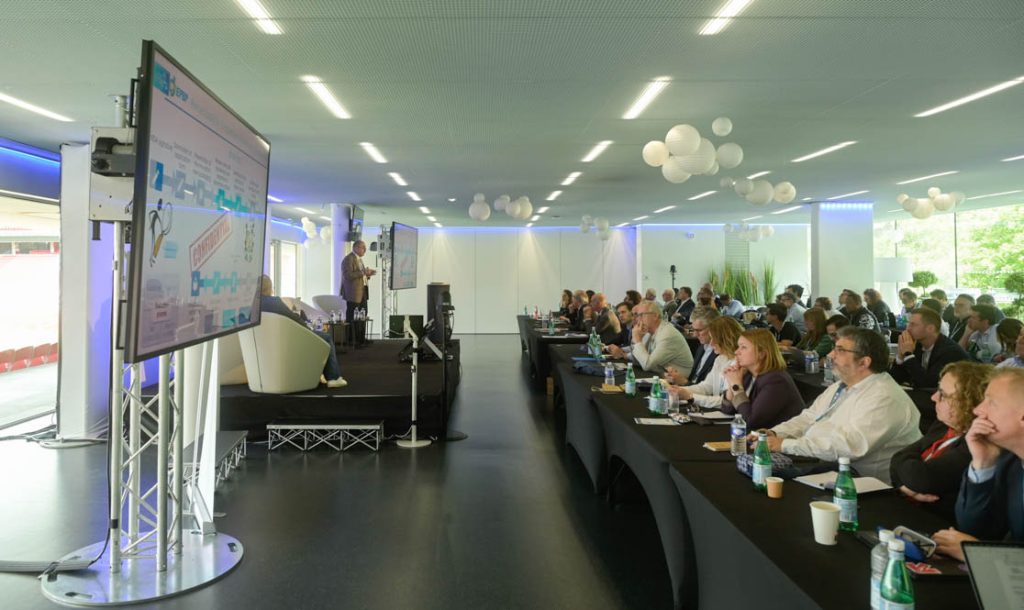
What are the main challenges PETCORE EUROPE is currently facing, and which external factors could potentially impact your scheduled operations?
PETCORE EUROPE’s primary challenge lies in balancing industry growth with the rapidly evolving European regulatory landscape. While PET has established itself as the leading circular packaging material, increasing policy pressure—particularly from the Packaging and Packaging Waste Regulation (PPWR) and the Single-Use Plastics Directive (SUPD)—demands higher recycling targets, mandatory recycled content, and stricter eco-design criteria. Meeting these requirements consistently across all Member States poses a challenge, given variations in national collection systems and infrastructure.
Another critical issue is the availability and quality of recycled PET (rPET). While demand for rPET, especially food-grade, is surging, supply remains limited due to insufficient collection rates and sorting inefficiencies in several markets. This imbalance creates both economic and reputational pressure for the PET value chain.
Externally, PETCORE must also navigate geopolitical and economic factors, including fluctuating energy prices, inflationary pressures on raw materials, and global competition for recycled plastics. Trade disruptions or regulatory divergences between the EU and other regions may further affect supply chains.
Additionally, consumer perception remains a sensitive area. Despite PET’s strong environmental credentials compared with many alternatives, public debates around plastics can be polarised, potentially leading to oversimplified policy decisions that overlook PET’s recyclability and efficiency.
To address these challenges, PETCORE continues to strengthen collaboration across the value chain, advocate evidence and science-based policies, and invest in technological innovations. External factors may introduce uncertainty, but PETCORE’s strategy remains focused on ensuring PET is not only compliant with legislation but also recognised as a vital contributor to Europe’s sustainability agenda, assuring also consumer’s safety.
Milestone years for European climate and packaging legislation are approaching. Which of these legislative frameworks directly concern PET, and how far along are we in meeting the relevant targets?
Several EU legislative frameworks directly affect PET packaging. The Single-Use Plastics Directive (EU 2019/904) sets ambitious targets: by 2025, PET beverage bottles must contain at least 25% recycled content, rising to 30% by 2030. In addition, Member States must achieve a 77% collection rate for plastic beverage bottles by 2025 and 90% by 2029. PET is at the forefront of compliance, with many markets already exceeding collection targets and several brand owners achieving or surpassing recycled content thresholds.
The Packaging and Packaging Waste Regulation (PPWR), in action, will further reinforce eco-design standards and establish harmonised criteria for recyclability. PET’s high recyclability positions it strongly within this framework, but increased scrutiny on multi-material packaging and labelling requirements means that ongoing innovation is critical. The related implementation acts will clearly define to operational frameworks.
In food-contact applications, Regulation (EU) 2022/1616 governs the use of recycled plastics, requiring all rPET production processes to be authorised by EFSA. Here, PET leads as the only recycled plastic with widespread food-contact approvals, thanks to its proven safety and robust recycling technologies.
Progress toward these targets is encouraging. Deposit return schemes (DRS) are expanding rapidly, boosting collection rates in countries such as Germany and the Nordics. Southern and Eastern European markets are catching up, with Greece, Portugal, and Romania rolling out systems. On recycled content, many large beverage companies have already placed 100% rPET bottles on the market, showcasing both technical feasibility and market readiness.
While challenges remain in ensuring consistent performance across Europe, PET is currently the polymer best positioned to meet and even exceed the EU’s climate and circularity milestones.
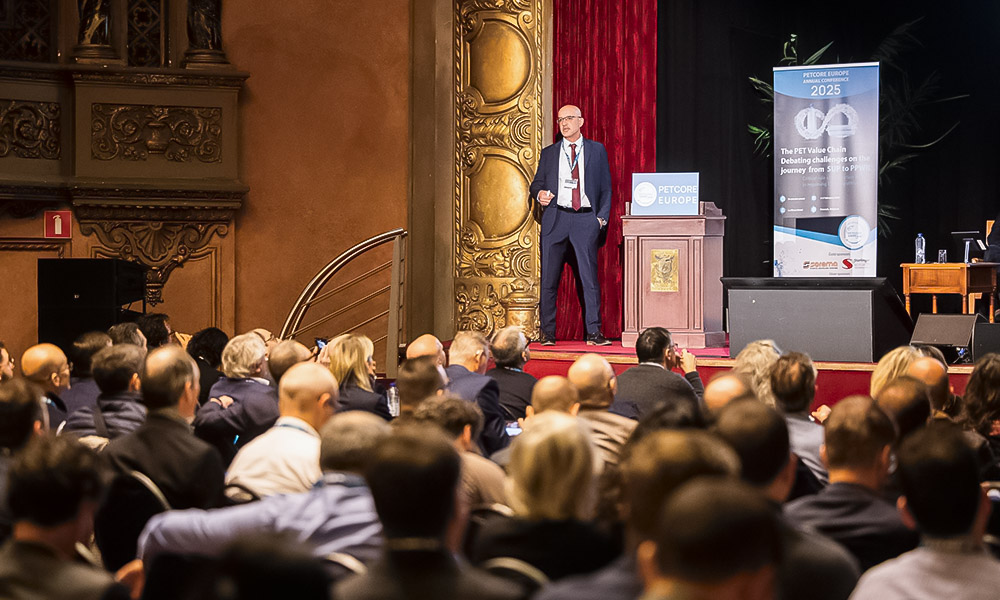
As a Greek, how would you assess Greece’s performance specifically in terms of PET adoption in packaging, as well as in relation to recycling rates?
Greece has made visible progress in the adoption and recycling of PET, though it still lags leading European countries. PET has become a mainstream material in beverage and food packaging across the Greek market, largely due to its light weight, durability, and recyclability. Many major Greek and international brands operating in the country use PET bottles and trays extensively, recognising its compliance with EU sustainability requirements and consumer preferences for convenience and safety.
On recycling, however, performance has been mixed. According to Eurostat, Greece’s overall plastic packaging recycling rates remain below the EU average. While countries with long-established deposit return schemes, such as Germany and the Nordic region, achieve collection rates above 90%, Greece is only now accelerating efforts through the introduction of new systems aligned with EU directives. The transposition of the Single-Use Plastics Directive and the Packaging and Packaging Waste legislation is a significant step, obliging Greece to strengthen collection infrastructure and increase recycled content in bottles.
The mandatory use of rPET in beverage bottles from January 2025 in line with European and National legislation, as well as the expected launch of the deposit-refund system in the coming months, are catalysts for change in relation to the production and use of rPET in Greece. The prospect of closing the PET reuse cycle in Greece creates opportunities for businesses in this sector that will lead to new jobs and a series of investments in the important area of the circular economy.
Positive momentum can already be seen: the development of separate collection streams for beverage bottles, the growth of local PET recycling facilities, and pilot initiatives by municipalities and retailers. Moreover, it is promising that several Greek beverage companies have launched bottles with higher rPET percentage than their legal obligation, showing market trend for circular solutions.
While there is still ground to cover, especially in public awareness, consumer participation, and waste sorting, Greece’s trajectory is encouraging. With stronger infrastructure, consistent enforcement of EU rules, and continued investment in rPET, the country is well positioned to align with European standards and significantly improve its PET recycling performance by 2025–2030.
How can a company become a member of PETCORE EUROPE, and what are the main benefits of membership?
Becoming a member of PETCORE EUROPE is open to all companies and associations active in the PET value chain. This includes PET producers, primary and secondary packaging for PET packaging, recyclers, converters, brand owners, technology suppliers, retailers, and waste management companies. The process typically involves applying through PETCORE’s website, providing details about the company’s role in the PET industry, and agreeing to membership terms and fees. PETCORE’s board reviews applications to ensure alignment with the association’s mission of promoting PET as a circular packaging solution.
The benefits of membership are both strategic and operational. First, members gain access to working groups and technical committees that drive innovation, set design-for-recycling guidelines, and evaluate new packaging solutions.
Second, PETCORE provides regulatory advocacy at the EU level, ensuring the voice of the PET industry is heard in legislative processes concerning packaging, recycling, and sustainability. Members benefit from early insights into policy developments and the opportunity to contribute to position papers and consultations.
Third, membership offers networking opportunities, most notably through the PETCORE Annual Conferences, where industry leaders, policymakers, and innovators meet to exchange knowledge and shape the future of PET.
Ultimately, being part of PETCORE allows companies to stay at the forefront of technological, regulatory, and market trends, while collectively reinforcing PET’s role as the packaging material of choice in a circular economy.
In a few words, what does the concept of circular economy mean for PETCORE EUROPE?
For PETCORE EUROPE, the circular economy means closing the loop on packaging materials so that resources are continuously reused, waste is minimised, and environmental impacts are reduced. In practice, this translates into ensuring that every PET package placed on the market is designed for circularity (multiple loops recycling), efficiently collected, and reprocessed into high-quality recycled PET that can be used again in bottles, trays, and other applications.
Unlike traditional linear models of “take, make, dispose,” the circular economy aims to keep PET in circulation at its highest possible value for as long as possible. This requires collaboration across the entire value chain—from producers and converters to brand owners, recyclers, and consumers. PETCORE EUROPE actively supports this by validating innovative packaging solutions, setting technical standards, and advocating policies that favour recycling over incineration or landfill.
The circular economy also means aligning with EU climate and resource-efficiency goals. By ensuring PET consistently achieves high collection and recycling rates, PETCORE demonstrates that plastics can be both practical and sustainable. Circularity is not only about compliance with regulation but also about creating a resilient, innovative, and competitive European PET sector that thrives in a low-carbon future.
In short, for PETCORE EUROPE the circular economy is both a guiding vision and a concrete operational framework: a system where PET is continuously collected, recycled, and reused, proving itself as the circular material of choice.
What are the enablers for PETCORE to validate PET innovations that are launched in the market?
PETCORE EUROPE’s ability to validate and support PET innovations is built on a combination of technical expertise, structured platforms, and collaboration across the value chain. Central to this process are two dedicated platforms: the European PET Bottle Platform (EPBP) and the Tray Circularity Evaluation Platform (TCEP).
EPBP (also supported by UNESDA and NMWE) plays a pivotal role in assessing new PET bottle designs. It provides design-for-recycling guidelines, conducts technical evaluations, and issues formal opinions on whether an innovation—be it in material, barrier technologies, closures, or labels—maintains compatibility with existing recycling streams. This ensures that any novel packaging solution entering the market does not compromise recyclability and that innovation goes hand in hand with circularity. EPBP’s rigorous protocols and impartial framework give brand owners and technology providers confidence that their designs meet both technical and regulatory requirements.
Recently EPBP has launched the Circularity test protocol and in the next months the Design-for-Circularity Guidelines will be launched.
EPBP is a CEN liaison organization also.
TCEP performs a similar function for PET trays and thermoformed packaging, which represent an increasingly important but more complex segment of PET use. TCEP evaluates new tray structures, additives, and multilayer designs, ensuring they remain recyclable within the European infrastructure. By issuing guidance and validation reports, TCEP enables innovators to adapt their products to meet recyclability benchmarks while supporting the scaling up of tray collection and recycling capacity.
Beyond these platforms, PETCORE EUROPE acts as an enabler by coordinating working groups, sharing life-cycle expertise, and fostering dialogue between innovators, recyclers, and policymakers. This collaborative ecosystem ensures that innovations are not only technically sound but also aligned with EU legislative frameworks such as the Packaging and Packaging Waste Regulation (PPWR).
In short, the structured validation processes of EPBP and TCEP, combined with PETCORE’s convening power and scientific know-how, create a robust system that accelerates innovation while safeguarding the integrity of Europe’s PET circular economy.
Could you also share a few details about the upcoming PETCORE EUROPE ANNUAL CONFERENCE 2026 and its key themes?
The PETCORE EUROPE Annual Conference 2026 will once again serve as the key gathering point for stakeholders across the PET value chain, bringing together industry leaders, policymakers, recyclers, converters, and technology innovators. The event is scheduled to take place in early February 2026, in Rome, and will provide a platform for strategic discussions, technical updates, and networking at a decisive moment for Europe’s circular economy.
Key themes are expected to revolve around three central pillars. First, legislation and policy, with sessions dedicated to the implementation of the new Packaging and Packaging Waste Regulation (PPWR), the upcoming 2025/2030 EU targets, and the implications for PET producers and recyclers. Second, technological innovation, through the works that is done PETCORE’s EUROPE Working Groups. Third, market development, through our collaboration with ICIS, addressing supply-demand dynamics, brand commitments to rPET, and investment opportunities in collection and recycling infrastructure.
Special attention will also be given to trays and thermoformed packaging, where TCEP is driving new initiatives to scale up collection and recyclability. Likewise, EPBP will present updates on bottle design evaluations and the circularity project.
The conference traditionally attracts more than 300 participants from across Europe and beyond, making it an unparalleled opportunity to exchange knowledge and shape the future of PET in the circular economy. The 2026 edition will be particularly significant, as it will mark the first checkpoint year for several EU legislative milestones, providing both a progress review and a roadmap for the years ahead.

